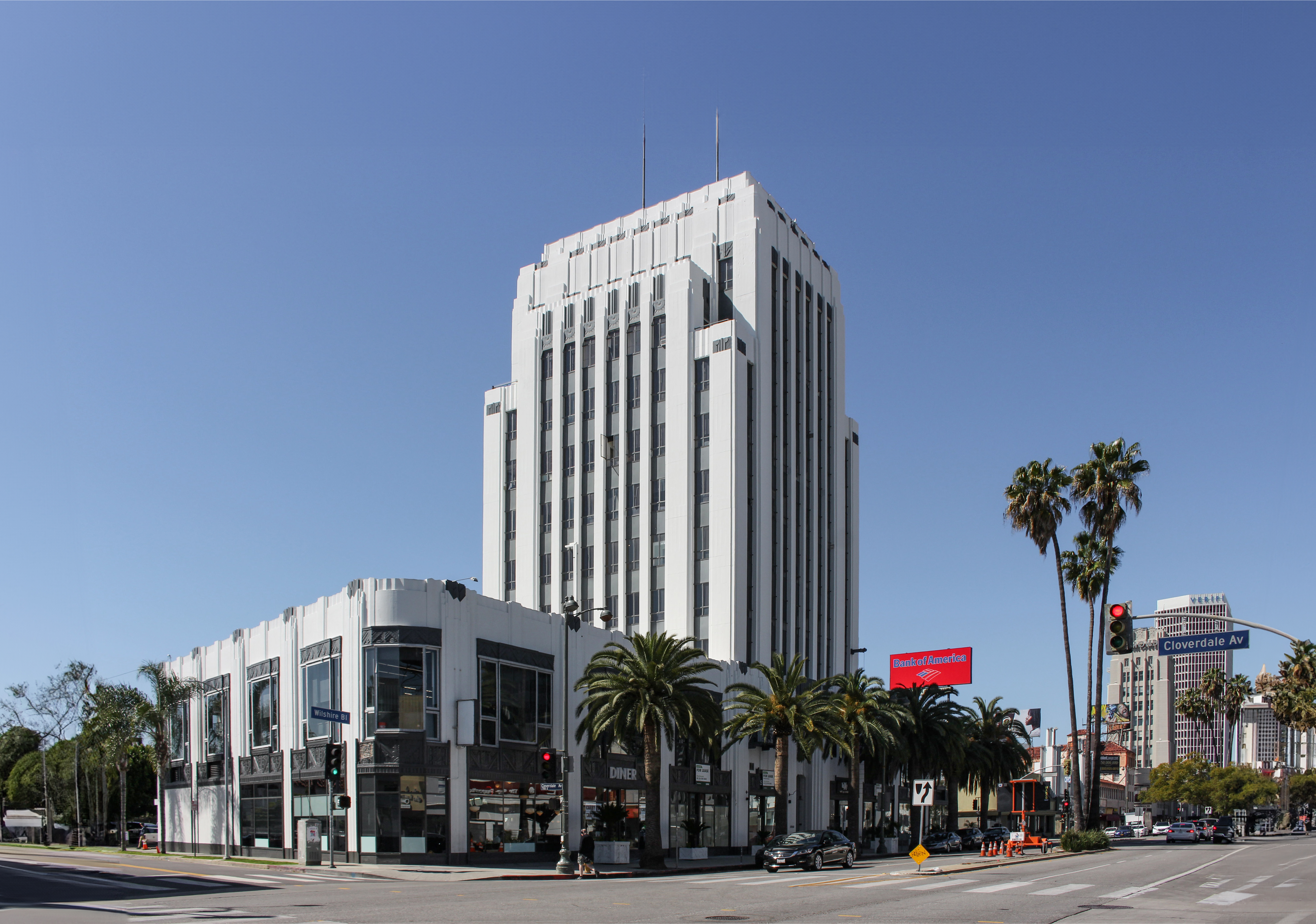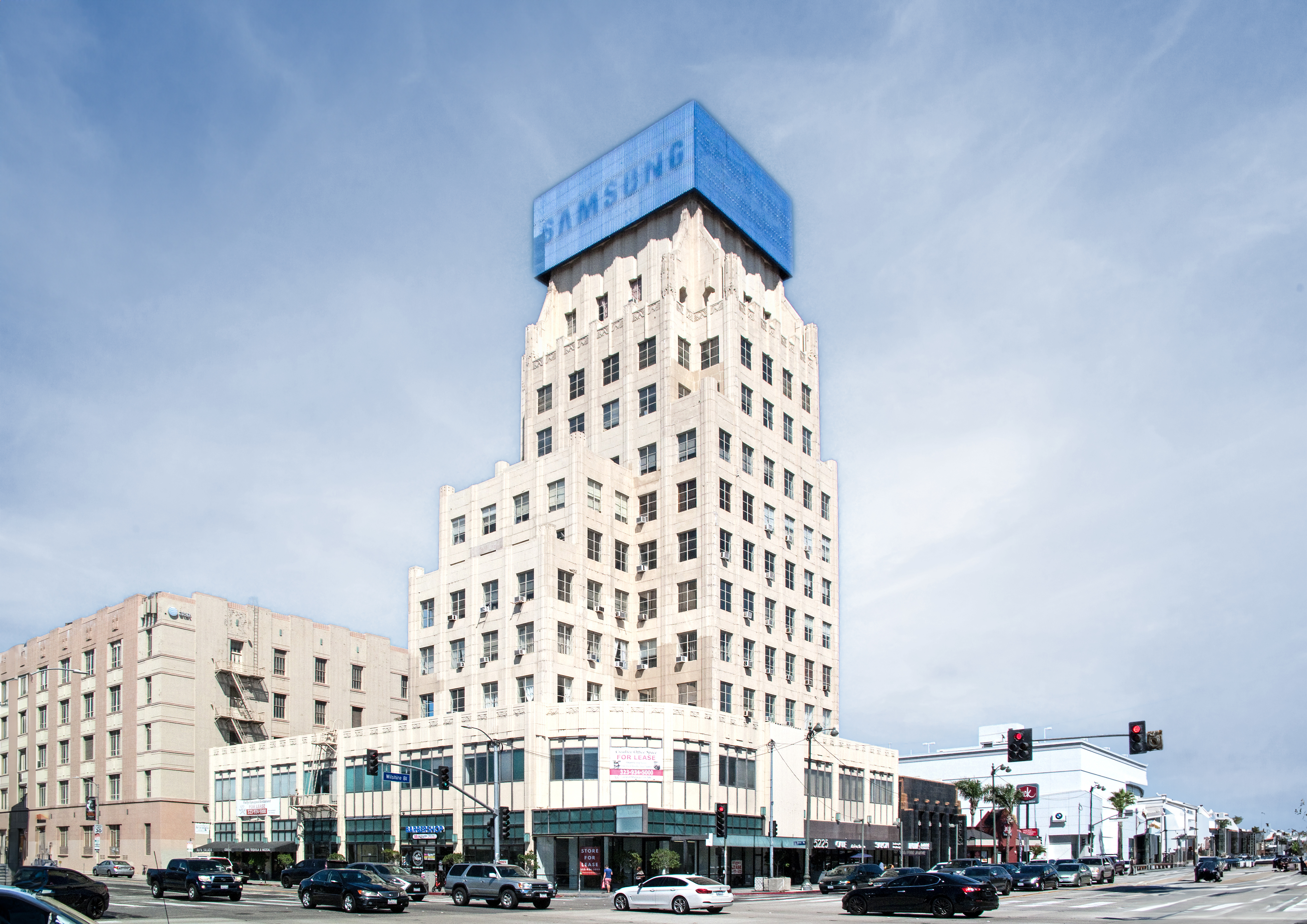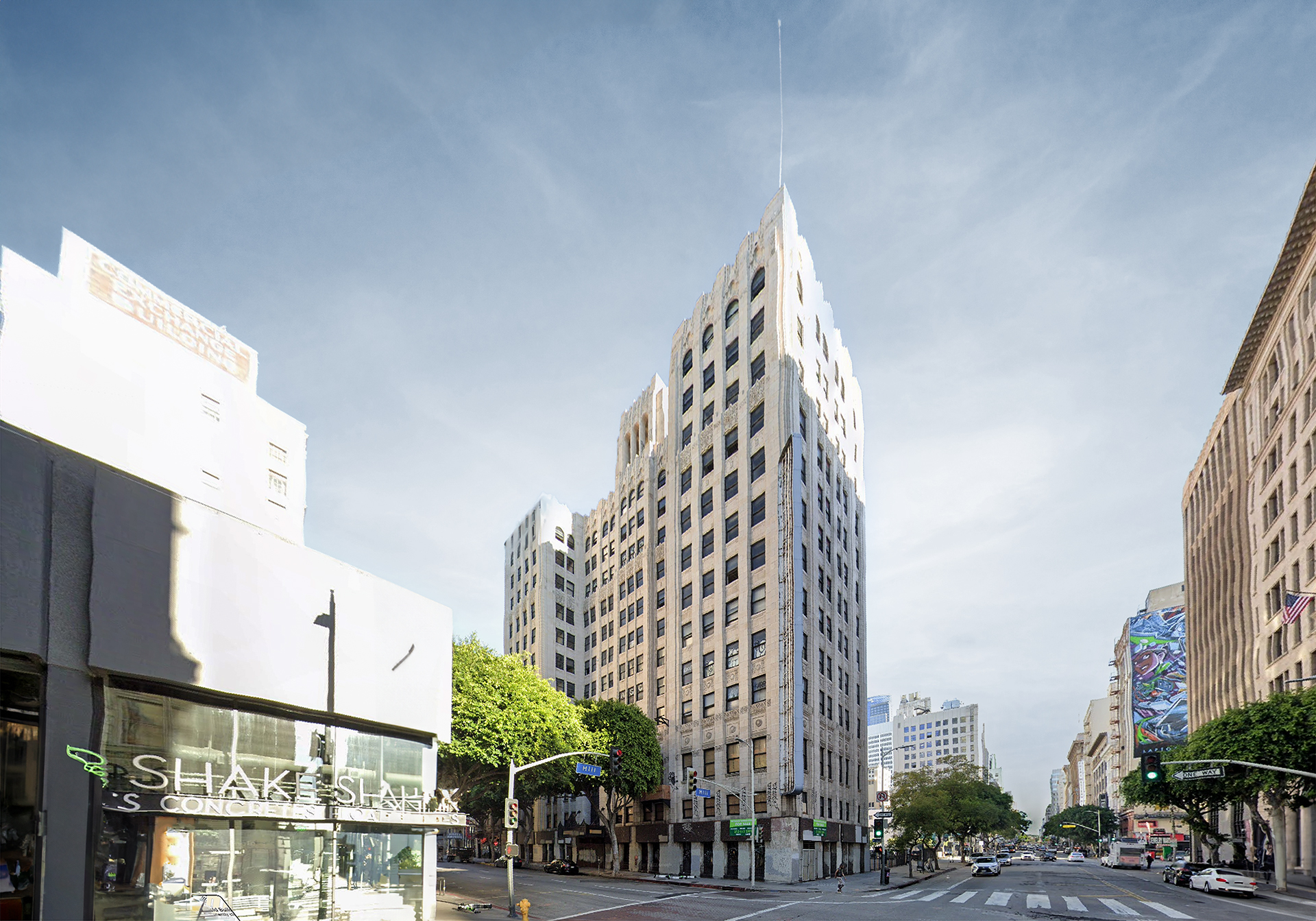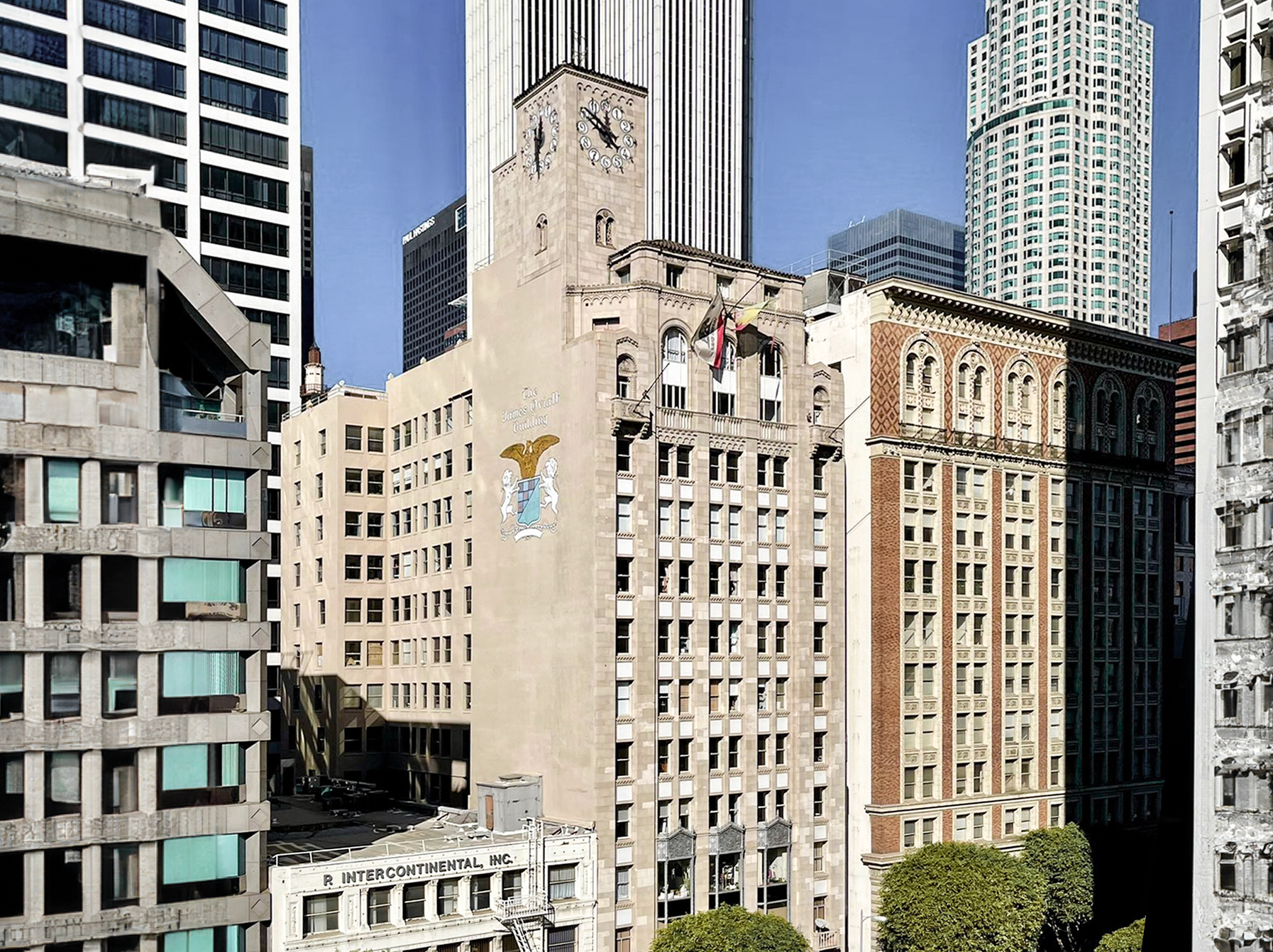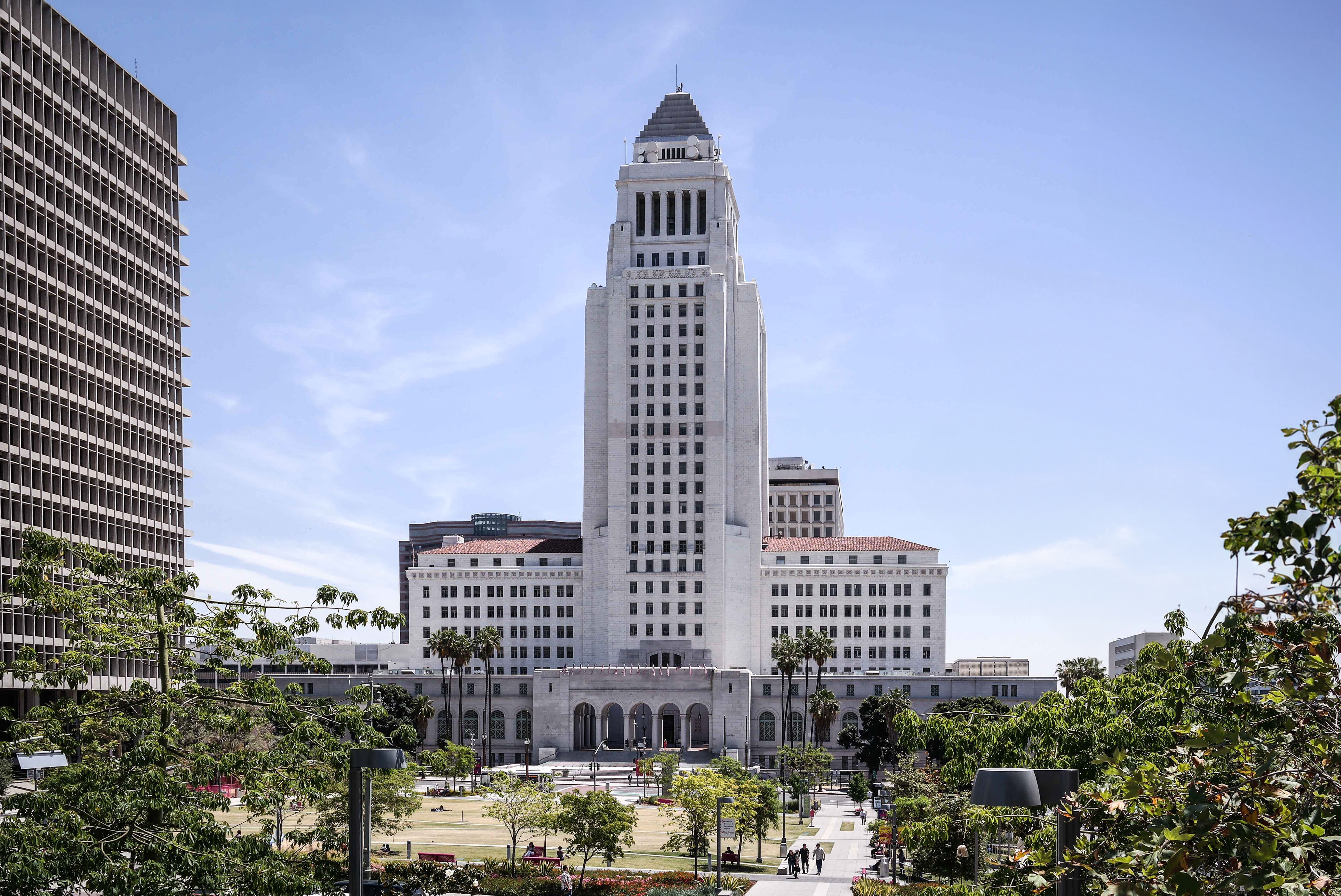The Dominguez–Wilshire Building is an Art-deco skyscraper designed by Morgan, Walls & Clements and built between 1928 and 1930 in Los Angeles, CA.
Its precise street address is 5410 Wilshire Boulevard, Los Angeles, CA. You can also find it on the map here.
The building underwent a major restoration in 2000.
